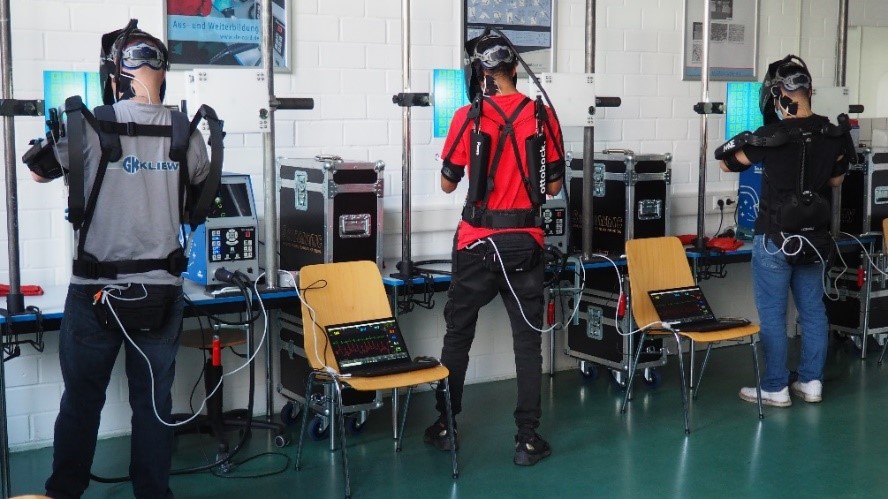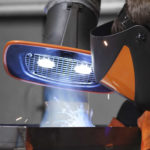Ergonomics in welding: How exoskeletons provide relief
Back pain, tension in the neck, pulling in the shoulder: Welders are prone to musculoskeletal disorders. One of the things to blame for this is the posture they have to adopt while working. They spend many hours a day bent over a metal part or holding the welding torch above their head. Exoskeletons can provide a remedy. What looks like science fiction passed its first test run in October 2021 in Hamburg at the Schweißtechnische Lehr- und Versuchsanstalt Nord (Welding Training and Testing Institute North).
Exoskeletons are already being used in numerous industries such as logistics or the automotive industry and even in healthcare. They enable employees to maintain an ergonomic posture and minimise negative effects on the musculoskeletal system due to one-sided physical activities. They support the movements of the wearer. Depending on their needs, they can also amplify movements with the help of small drives on the joints of the exoskeletons.
Reducing strain on the upper body and arms
At first glance, these support devices seem strange. But for strenuous activities like overhead welding, they support the upper body and arms and reduce strain. That is the assumption. During the online conference of the teaching and testing institute, it was confirmed that exoskeletons can indeed reduce the strain on welders. Over three days, nine welders tested the support apparatus. They welded for one hour with and one hour without the exoskeleton. The experiment was accompanied and evaluated by the Fraunhofer Institute for Manufacturing Engineering and Automation and the Institute of Industrial Manufacturing and Management IFF at the University of Stuttgart.
Welders feel relief from exoskeleton
The result was clear: 8 out of 9 welders confirmed after the tests that they felt significantly relieved by the exoskeleton during work. This subjective perception coincided with the biodata collected during the tests. Heart rate decreased by 5 percent, oxygen consumption by 6.8 percent. In addition, the heart pumped up to 16.2 percent less blood per minute through the body. The stability offered by an exoskeleton also affected the quality of the welding seam. It improved by just under 2 per cent.
When selecting the tasks, the organisers chose the activities that are physically demanding for welders. This includes overhead welding. This puts a lot of strain on the muscles in the arms and shoulders. Exoskeletons can provide significant relief in this work and contribute to maintaining the health of the musculoskeletal system.






